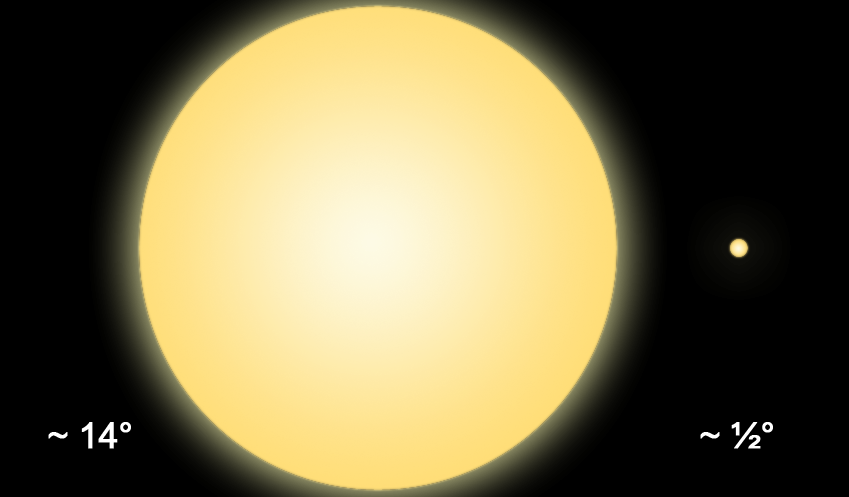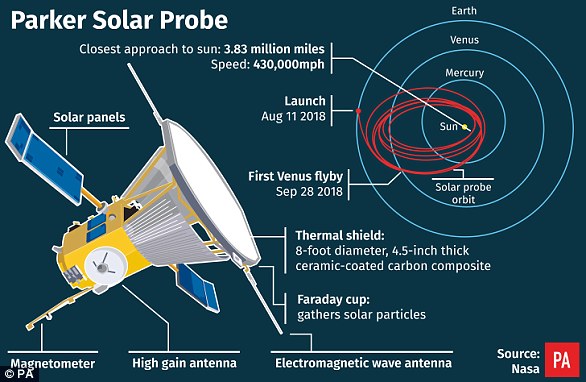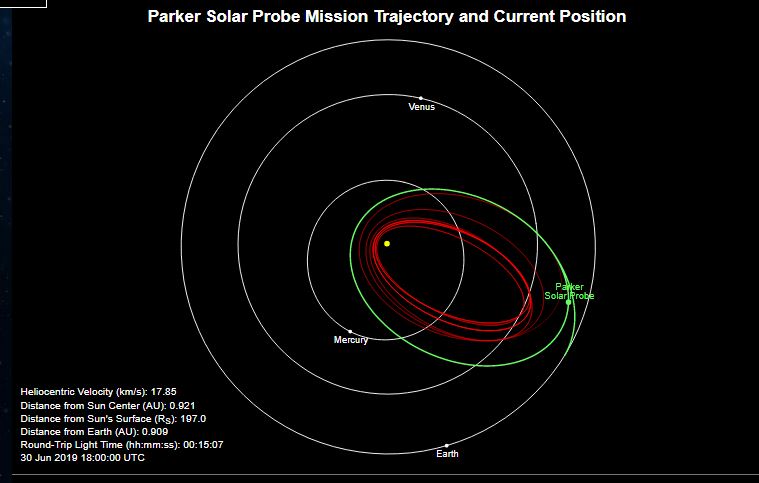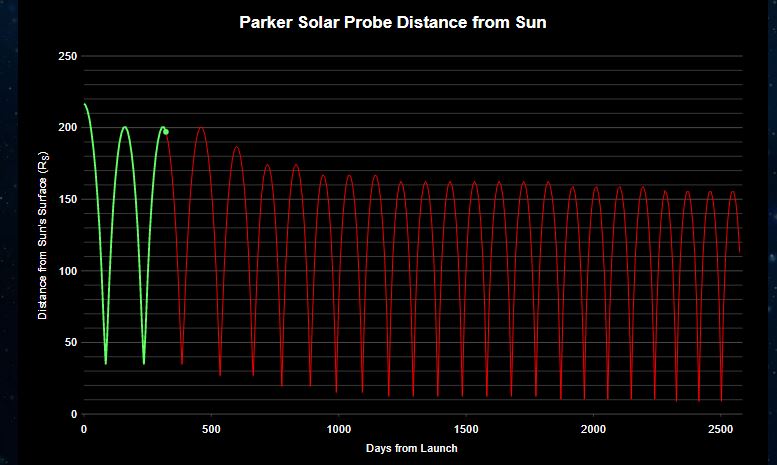At the time of Andrew Collins’ May 2019 talk to the Farnham Astronomical Society about the Parker Solar Probe, the probe had just completed the second of 24 close approaches to the Sun. By now (early July 2019), it will be well on its way to the furthest point on its very elliptical orbit, soon to swing back ready for its third close approach in September . The probe is a very ambitious project to get closer to the Sun than ever before in order to measure its magnetic and electric fields and characterise the stream of particles which make up the solar wind. It is described with understandable hyperbole as “The Mission to Touch the Sun”.
Timeline for the mission
The Parker Solar Probe was launched in August 2018 but, as with so many probes, it did not head straight for its destination. It first had a fly-by of Venus which had the effect of slowing it down. This helped to put it into an elliptical orbit round the Sun with the first close approach in January 2019.It is already the closest object we have ever sent to the Sun and it will continue looping round the Sun completing 24 orbits in total, getting closer each time until by June 2025, it is just 4 million miles away from the surface.(There will be a further six Venus fly-bys to help achieve this) If that still sounds a long way, then it is only 0.046 AU and crucially for the success of the mission, it will have to be able to tolerate temperatures of 1300oC at that distance.
A good impression of how close the probe will be is shown in this graphic : how big the Sun looks from the Earth and how big the Sun will look from the probe.

What will the probe do?
The following is taken from a NASA website : “ The primary science goals for the mission are to trace the flow of energy and understand the heating of the solar corona and to explore what accelerates the solar wind. Parker Solar Probe provides a statistical survey of the outer corona.”
To achieve this, it carries optical imaging devices, an instrument to measure the magnetic and electric fields and instruments to capture and analyse the particles that stream away from the Sun creating the solar wind and hence the solar weather. These particles are mainly electrons, protons and so-called heavy ions namely He-3 and He-4. It will be collecting 100,000 particles/second as it flies through the corona.

Staying cool!
A key part of Andrew’s talk was about the heat shield. The front face will experience a temperature of 1300oC and the instruments behind it remain at 30oC. All this across a shield made of a carbon composite just 4.5” thick with pressurised water coolant behind it. It is vital that the probe instantly adjusts its orientation as it is orbiting so that the shield is indeed acting as a shield. There is no time for any telemetry via Earth; the probe must be autonomous, using its seven heat sensors to confirm that the probe is pointing at the Sun. Perhaps the task of shielding is not quite as difficult as it might sound. The temperature is indeed very high but there is not that much energy to deal with, given the very low density of the corona medium. It is rather like the sparkler effect; the sparks are at a high temperature but being so small they are not that likely to burn you.
Why is it called the Parker probe?
The probe is named in honour of Eugene Parker who put forward theories in the 1950s about how the Sun’s corona behaves and he coined the term “solar wind”. Now aged 92 , he is the first astrophysicist to have a space probe named after him in his lifetime.
You can follow the progress of the probe over its seven year mission by visiting the mission website where you will find tracker images such as these.


Attributions
The main image and the tracker graphics are from NASA
The graphic of the apparent size of the Sun is from Maringaense [CC BY-SA 3.0 (https://creativecommons.org/licenses/by-sa/3.0)]
Talk given by FAS member Andrew Collins
Post written by Katherine Rusbridge
June 2019
